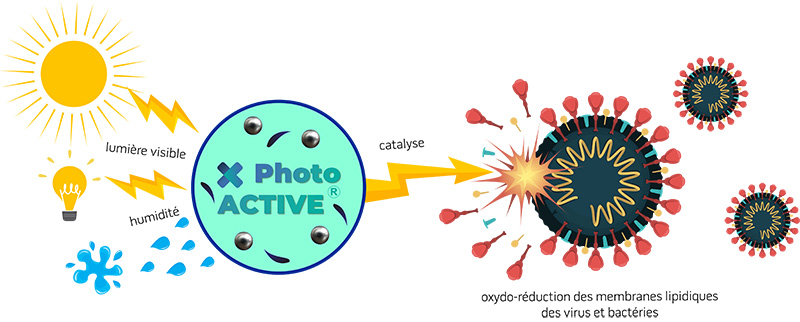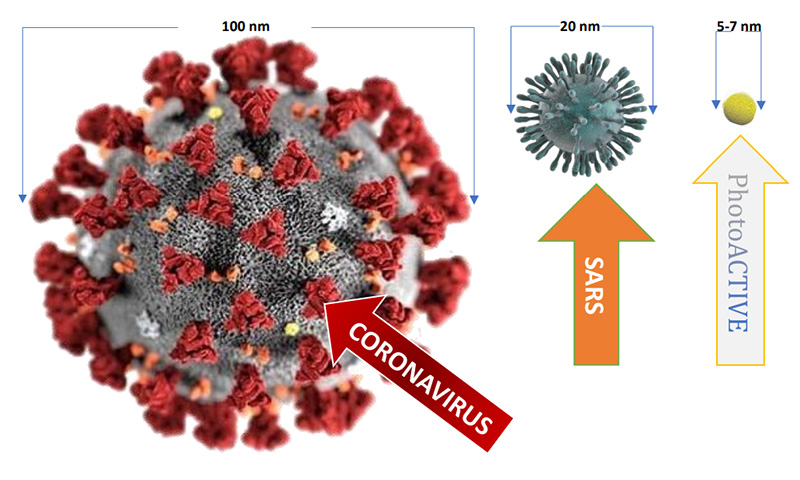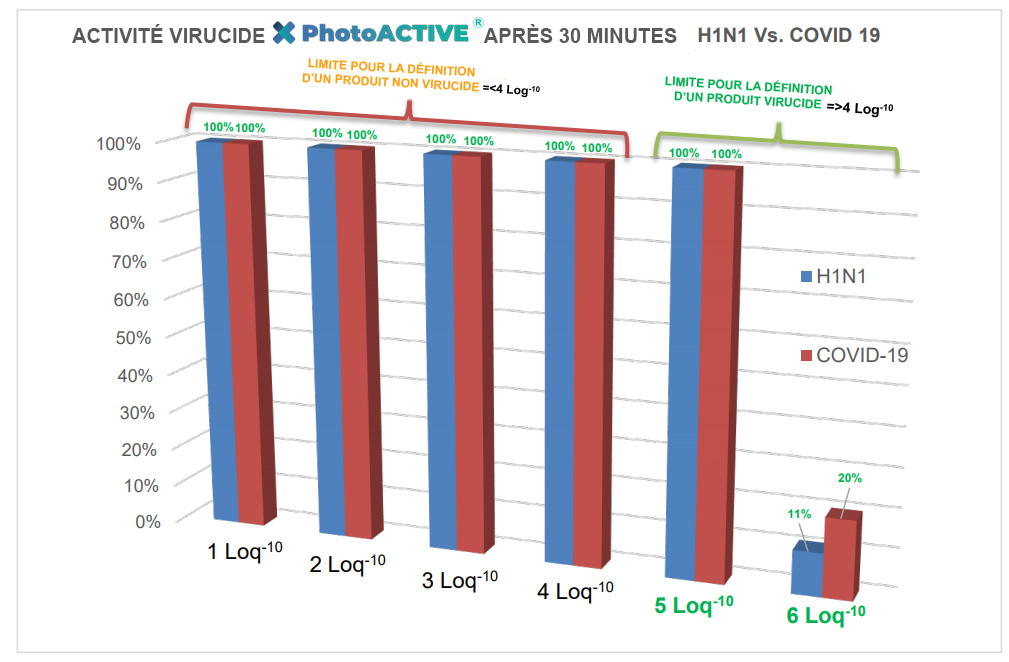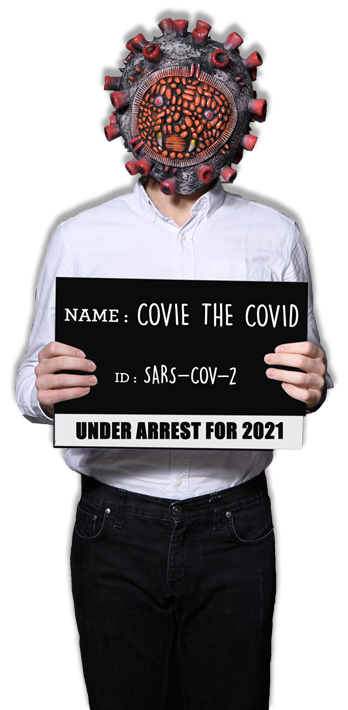Proven effectiveness against Sars-Cov-2 and H1N1.
PhotoACTIVE is a colloidal liquid solution that penetrates and attacks the lipid membrane of bacteria or viruses, thus reducing the microbial load present on treated surfaces. PhotoACTIVE is one of the most reliable long-lasting virucidal and bactericidal solutions available on the market, and is already used by many medical facilities. PhotoACTIVE is a long-lasting nanocoating that keeps treated surfaces bacteria-free and virus-free, delivering a full year of continuous protection.
How it works: reactive hydroxyl radicals are generated by the photochemical reaction of our patented PhotoACTIVE semiconductor. They penetrate the lipid membrane of bacteria and viruses to degrade it. PhotoACTIVE operates within the spectrum of visible light, and the addition of an adjuvant also makes it effective in the dark. As opposed to conventional, aggressive chemicals, this technology does not merely kill viruses and bacteria – it decomposes them into gaseous substances such as CO2 and water vapor: microbes evaporate into volatile molecules!


Proven effectiveness
Tests were carried out by the University of Siena, Italy, demonstrating its effectiveness against SARS-Cov-2, the virus responsible for Covid-19 and the H1N1 influenza. Antibacterial tests show that PhotoACTIVE is a fast-acting solution.
- Kills 99% of SARS-CoV-2 in under 15 minutes, or 99,99% in under 30 minutes (greater than 4-Log)
- Destroys more than 99,99% of bacteria in under 5 minutes (greater than 5-Log)
- Amongst all other commercially available products, PhotoACTIVE is the long-lasting solution that shows the fastest results
- Virucidal efficacy as per European standard EN 14476
- Bactericidal efficacy as per European standard EN 1276

Measuring PhotoACTIVE’s antibacterial activity on various bacteria as per standard BS EN 1276/2019. Results are analyzed after 5 minutes, at a temperature of 20°C.
| Bactérie | Suspension initiale (lg) | Décompte final (lg) | Effet bactéricide (réduction Log) | Limite spécification (lg) | Effet bactéricide (%) |
|---|---|---|---|---|---|
| Staphylococcus aureus ATCC 6538 | 7,26 | 120 | 5,18 | ≥ 5 | 99,999 |
| Escherichia coli ATCC 10536 | 7,23 | 160 | 5,03 | ≥ 5 | 99,999 |
| Pseudomonas aeruginosa ATCC 15442 | 7,27 | 1.0 | 6,27 | ≥ 5 | 99,999 |
| Enterococcus hirae ATCC 10541 | 7,25 | 140 | 5,10 | ≥ 5 | 99,999 |
Questions
In the early stages of the pandemics, the University of Siena (Italy) led the research response against SARS-Cov-2 , the virus responsible for Covid-19. They demonstrated the efficacy of PhotoACTIVE in accordance with the EN 14476 standard, the only standard currently accepted in France to demonstrate the virucidal activity of a disinfectant against covid-19. Antibacterial tests were performed by independent laboratories according to the BS EN 1276/2019 standard, used to evaluate the bactericidal activity of chemical disinfectants and antiseptics. PhotoACTIVE showed excellent results after one year of use and outstanding resistance to extreme conditions.
Other long-lasting liquid solutions, based on nanotechnologies using nitrogen or silica particles, are available on the market. These products are however not currently effective against SARS-Cov-2. Surfaces treated with these products require regular cleaning, at the risk of being obstructed by a layer of dead microorganisms (the biofilm). In contrast, PhotoACTIVE decomposes the molecules that make up these microorganisms into volatile molecules, so you can rest assured that treated surfaces remain clean. PhotoACTIVE guarantees that all surfaces remain sanitized, even those that are usually hard to clean, such as textiles (chairs, sofas), or that are often overlooked (handrails, handles...).

